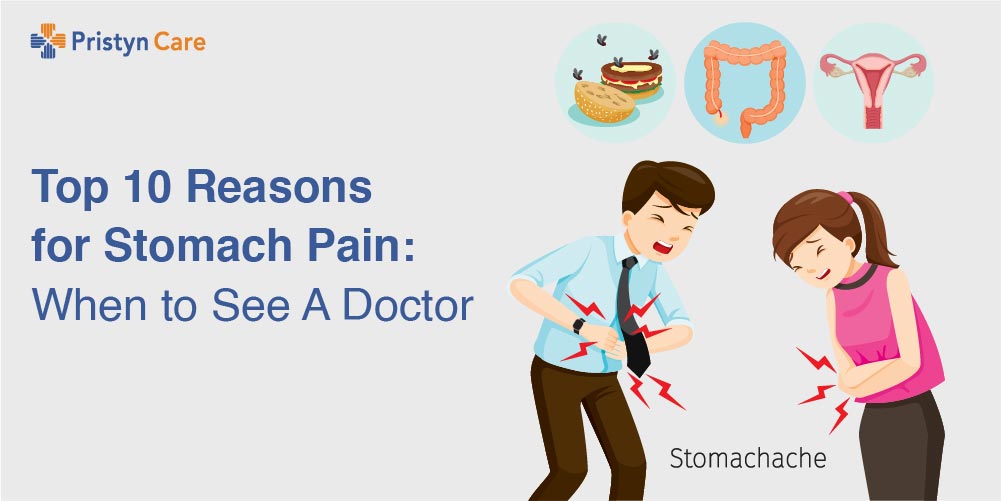
Most of the time, stomach pain is not serious while sometimes people fail to understand abdominal pain with stomach pain. But stomach being part of the abdomen can affect it too. There are several reasons for stomach pain which you may not know but are important. Before that, let us understand the anatomy of the stomach.
Table of Contents
Anatomy of Stomach
Stomach is part of the digestive system that lies between duodenum and esophagus. It is located inside the abdominal cavity in the small sac known as the bed of the stomach.
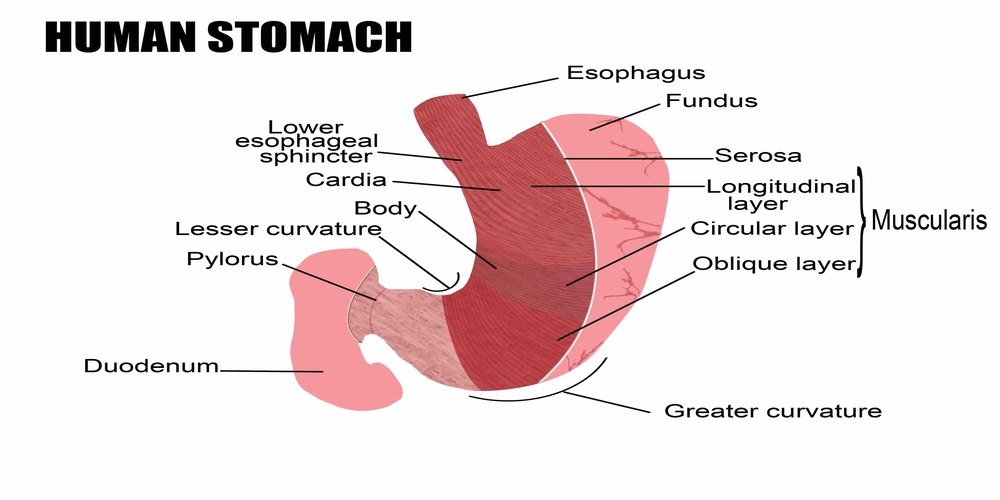
Some facts about stomach
| Relations | Anteriorly: diaphragm, liver (left lobe), and anterior abdominal wall Posteriorly: omental bursa (lesser sac), pancreas, left kidney, and adrenal gland, spleen, and splenic artery Superiorly: esophagus and diaphragm Inferiorly and laterally: transverse mesocolon |
| Part of stomach | Cardia, fundus, body, pyloric part |
| Functions | Mechanical and chemical digestion, absorption, hormone secretion |
| Layers | Mucosa, submucosa, muscularis external, and serosa |
| Blood supply | Gastric arteries, gastro omental arteries, short gastric arteries, posterior gastric arteries, gastroduodenal artery |
The primary function of the stomach is digestion of ingested food, both mechanical and chemical digestion. Due to continuous muscle contractions, the food breaks into fragments and gets along with the digestive juice.
In addition to digestion, the stomach also helps in absorption. The stomach can absorb water, caffeine and a small proportion of ethanol. The stomach also helps in controlling secretion and motility within the digestive tract by releasing hormones such as gastrin, cholecystokinin, secretin, and gastric inhibitory peptide.
Now, there are chances that this anatomy gets disturbed resulting in stomach pain as its first symptom. So, let us go through the reasons for stomach pain which is usually related to the gastrointestinal tract (GI tract) but can affect the small intestine, large intestine, pancreas, gallbladder, liver, kidney or reproductive organ.
Reasons for Stomach Pain
Gas
Gas or Acidity is a common problem that occurs due to various reasons such as junk food, skipping meals, food poisoning and so on. The gas accumulates in the intestine and digestive tract that can make you feel full and bloated. The pain may cause the stomach to swell, move around in the stomach, cause burping and farting or even during diarrhea or constipation.
Indian population is well-versed about home remedies for gas troubles such as drinking ajwain water, drinking more water and so on. Even over-the counter-medication can help relieve gastric troubles.
Also read: Home Remedies for Gas and bloating
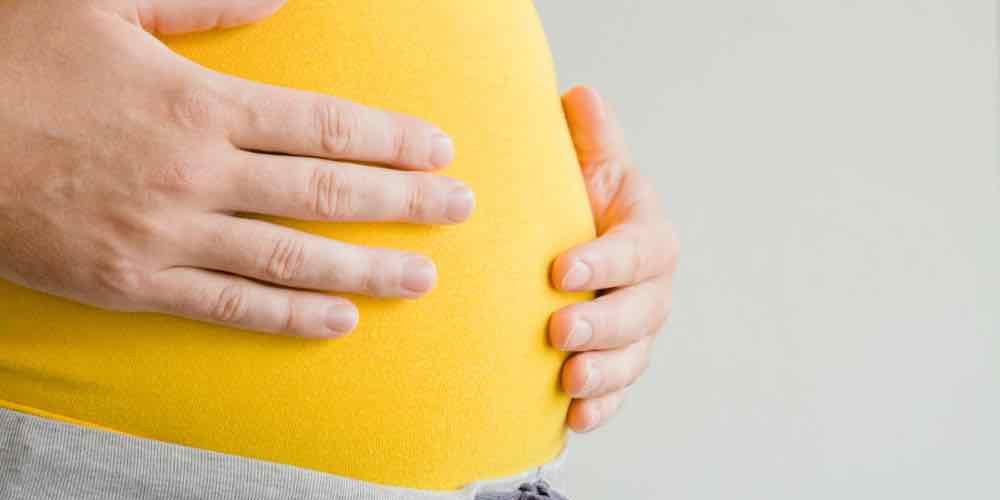
Gastritis and Indigestion
When the stomach lining swells and becomes painful, it is a sign of gastritis. Acute gastritis is usually due to bacterial infection and goes away soon with over-the-counter medicines. But if there is continuous irritation in the stomach lining, it leads to a chronic condition. It can be the result of Crohn’s disease, allergies, or some immune disease.
When you eat highly acidic food such as preserved food, carbonated drinks, processed meat, sugar, and certain dairy products, the amount of acid increases in the stomach. This leads to indigestion. Some people may notice lactose intolerance means allergic to dairy products.
At times, indigestion can be a consequence of acid reflux, stomach ulcer or stomach cancer. Indigestion, medically known as dyspepsia, is a burning sensation in the upper stomach.
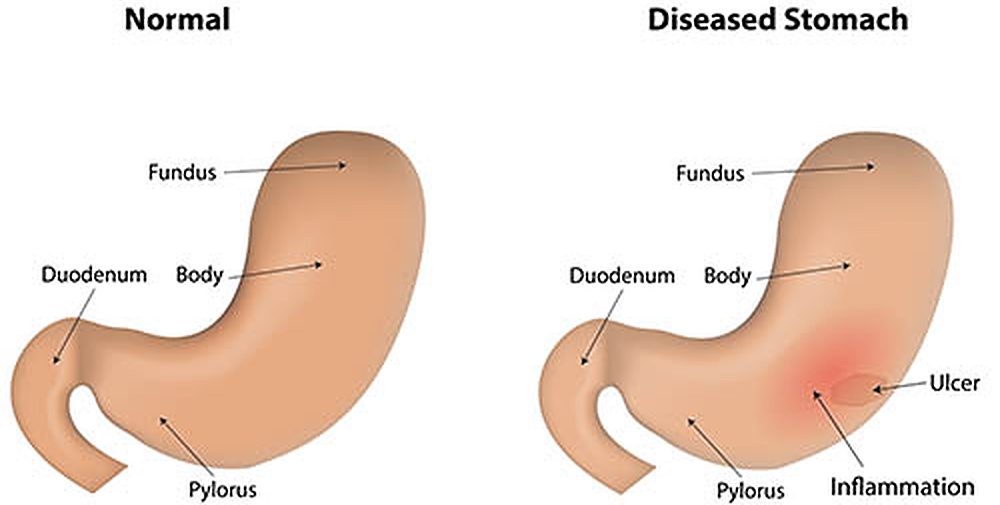
Constipation and Bowel Obstruction
The condition when you are unable to pass stool for a few days, pass hard stools, feeling of fullness even after emptying or strain excessively during the bowel movement, it is known as constipation. It can cause stomach pain and can make you very uncomfortable. Constipation can be a symptom of anorectal problems such as piles, fissure or fistula.
Bowel obstruction is the condition that blocks the intestine making it difficult to pass stool. It causes severe stomach pain and you have difficulty digesting and absorbing food. There can be intense cramping with a swollen stomach. It needs medical intervention because it can tear your bowel or infect it. (Also Read: Are Abdominal Pain and Constipation commonly related? )

Peptic Ulcers
These are the open wounds in the stomach – either in the upper part of the small intestine or in the stomach (stomach ulcers). Stomach pain is the most common symptom of peptic ulcers along with gas and bloating. They can be bleeding and cause the stomach lining to swell. Nausea, belching and vomiting is common in this condition.
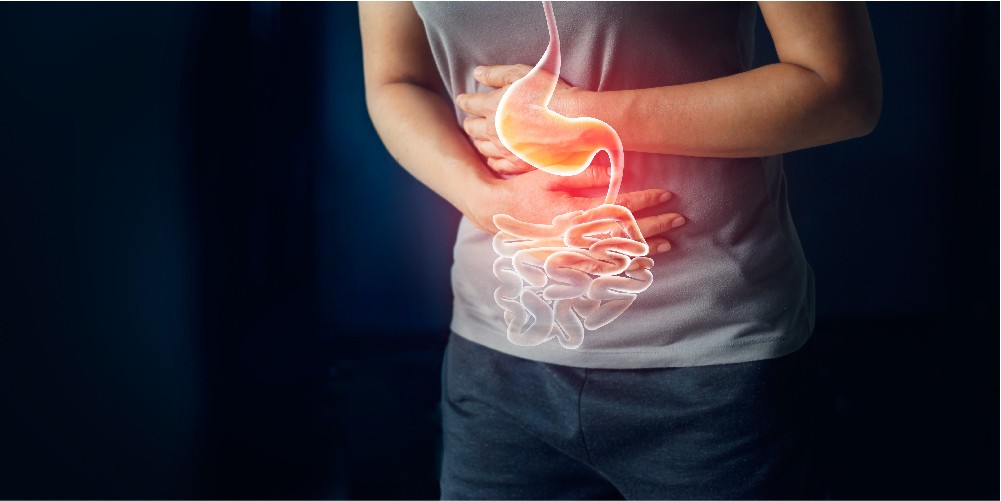
Esophagitis
Esophagus carries the food from the mouth to the stomach. If there is any irritation or inflammation in the esophagus lining it can lead to stomach pain. The reasons for irritation may be either allergy, infection such as herpes or side-effects of medicine. You may notice heartburn and difficulty in swallowing.
Gastroesophageal Reflux Disease (GERD)
GERD, also known as acid reflux, can be one of the reasons for stomach pain. Acid reflux is a condition when gastric acid goes back into the esophagus causing sore throat, burning sensation, and heartburn. In most cases of GERD, the LES(Lower esophageal sphincter) keeps relaxing when it’s not supposed to, thus allowing a brief interval of time in which the stomach contents can enter the esophagus.
Other symptoms of GERD are regurgitation, cough, difficulty swallowing or feeling of lump in the throat. GERD can result in problems such as chronic laryngitis, chronic sinus infection and even dental cavities.
It can also be a result of hiatal hernia. People go for surgery to treat this condition while others try to control it with lifestyle changes and medications.
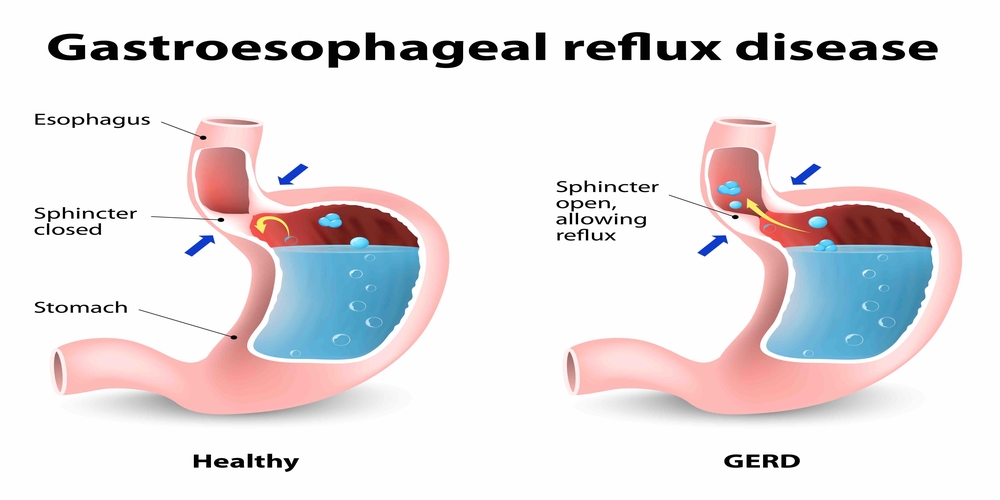
Gallstones
Gallstones are hard cholesterol deposits that form in the gallbladder. Most of the time you do not get any symptoms of gallstones but sometimes you get a sharp pain in the upper right stomach. This is known as gallbladder attack. You observe these attacks when the gallstones block the bile duct. Bile is the digestive fluid that solidifies when the amount of cholesterol increases in bile.
If gallstones are left untreated it can affect the functioning of the liver and pancreas. To remove gallstones, the doctors remove the gallbladder and it is not difficult to live without the gallbladder. Click to know more about gallbladder removal treatment.

Appendicitis
This is an emergency situation whose initial symptom is abdominal pain. It starts with mild pain around the belly. Over time, it comes down to the lower abdomen and intensifies. It is the condition where the appendix swells. Surgery is the only way to treat appendicitis.

IBS and IBD
Irritable Bowel Syndrome (IBS) is a functional disorder of the colon. Bloating, abdominal pain, severe cramps in the stomach, diarrhea, constipation are all symptoms of IBS. Doctors diagnose it on the basis of its symptoms.
Inflammatory Bowel Disease (IBD) is a collective term used for diseases such as Crohn’s disease and Ulcerative colitis. Both these problems affect the digestive tract and have similar symptoms that include abdominal pain, fever, rectal bleeding and diarrhea.
(Also Read: IBS vs IBD – Know the difference)

Abdominal Hernia
Abdominal hernia includes umbilical hernia (near the belly button), ventral hernia or groin or inguinal hernia (near the groin). In this case, you notice stomach pain along with bulging in the abdomen, it means fatty tissues have become weak and there may be tears in the abdominal wall. Above all, consult a doctor because there is a risk of stomach cancer when the pain is severe and gets worse with time.
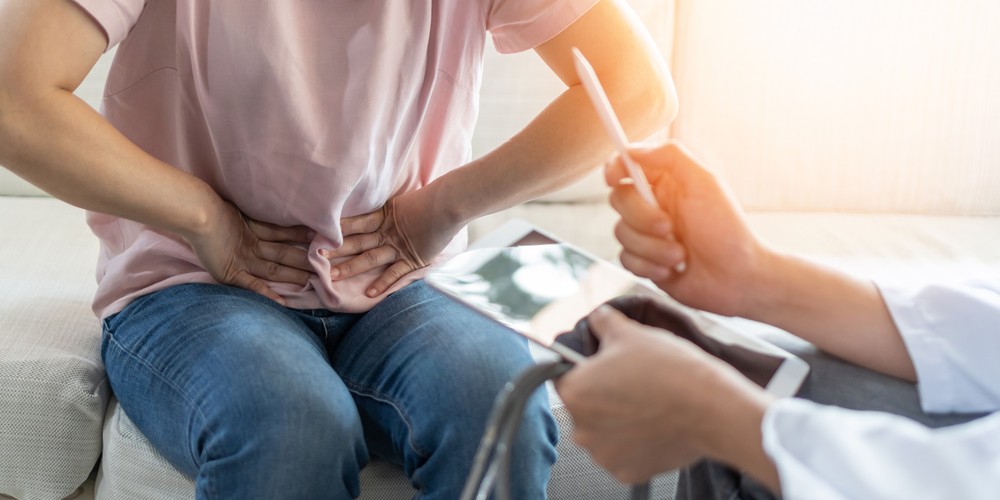
Reasons for stomach pain in women
Women go through stomach pain in their daily lives but they tend to ignore it. Let us discuss the reasons for stomach pain or abdominal pain in women.
Urine Infection
Cramps and burning in the stomach while passing urine indicates urine infection. This can be due to gallbladder stones. Therefore, consult a doctor if you notice sharp pain and difficulty passing urine.
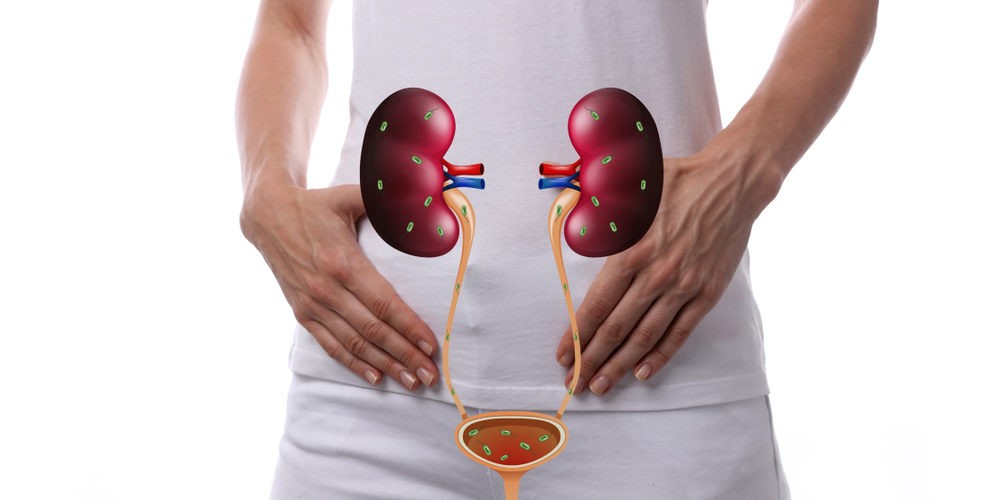
Period Pain
There is stomach pain during periods that travel across sides too. It eases after a few days of blood loss. A hot compress or some Yoga exercises can help you get relief from period pain.

Ovulation Pain
There is a sharp pain between the two menstrual cycles when a female body ovulates. The ovary releases eggs between the menstrual cycle about two weeks before your next period. The stomach pain during ovulation may vary from body to body. It can be severe and it may be temporary.
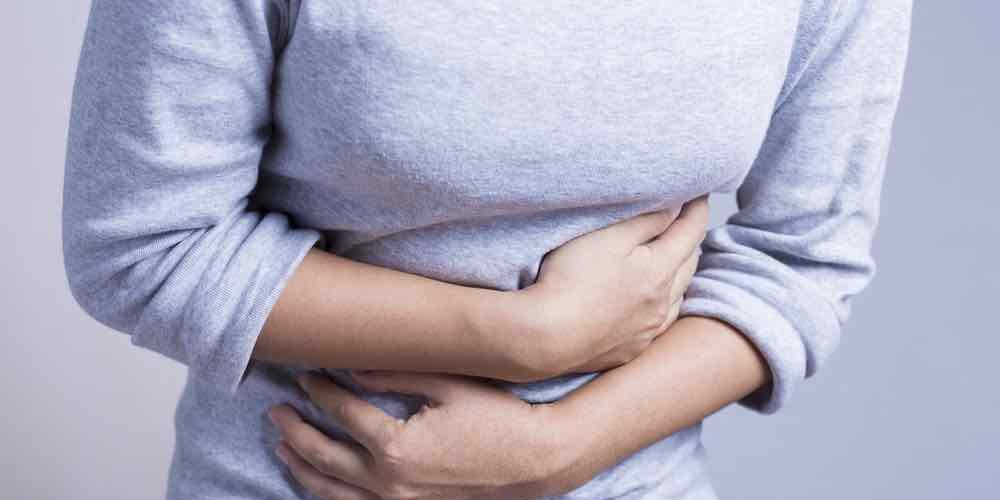
Ovarian Cyst
When the ovarian cysts grow large, twist or rupture, a woman experiences severe pain in the abdomen. There may be pain during sex, bloating or while passing urine. This is commonly seen in women who have gone through menopause. Although there is no such scientific evidence, some ovarian cysts can be cancerous.
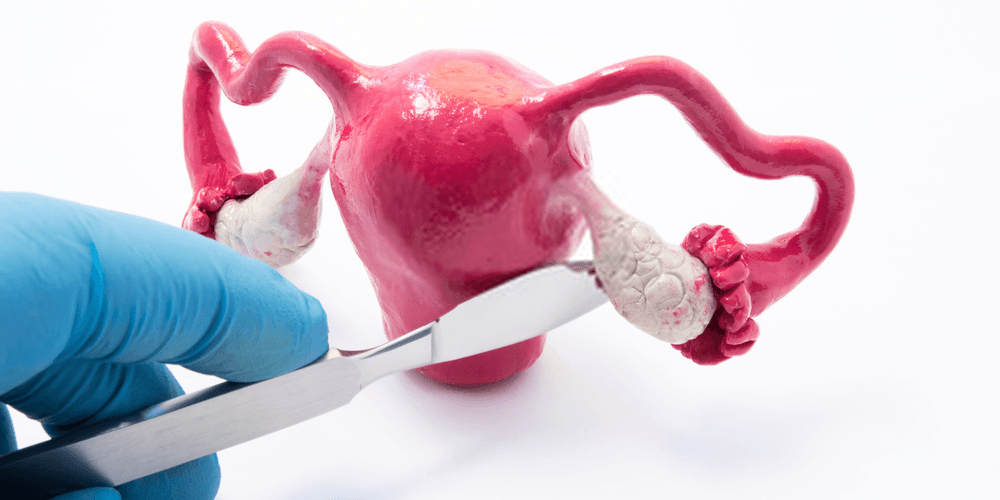
Endometriosis
Endometriosis is a condition when endometrial tissue grows on your ovaries, bowel, and tissues lining your pelvis outside the uterine cavity. It causes pain in the abdomen and makes the area swell. Painful periods, pain in the abdomen, discomfort with bowel movements and heavy bleeding may indicate endometriosis. (Also Read: What are the 4 stages of endometriosis? )
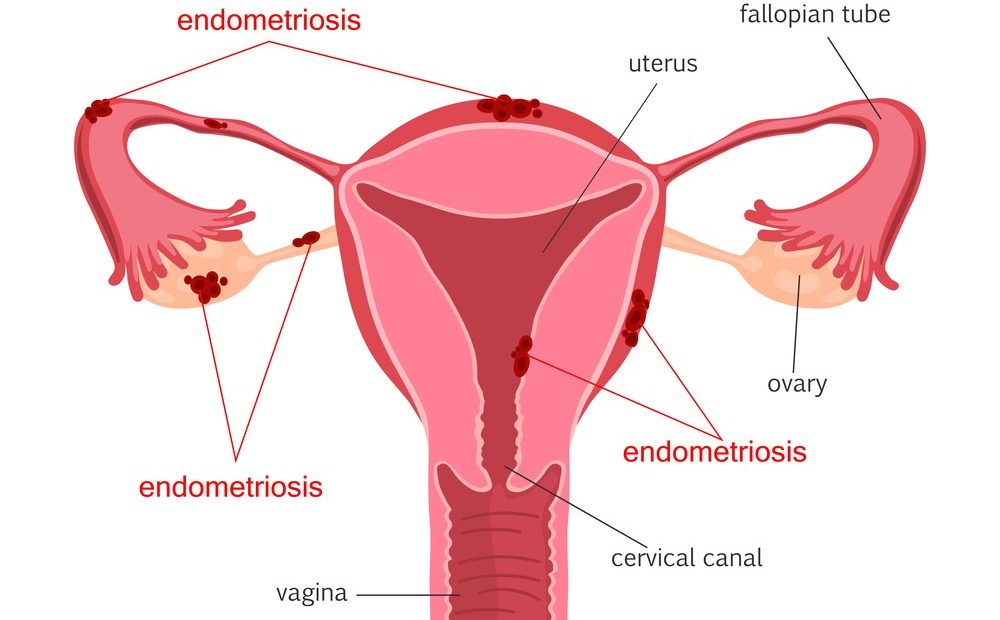
When to see a doctor
Usually, it is easy to treat stomach pain with home remedies as it can be muscle pain too. It is safe to wait for the stomach pain to go without treatment. But, it is always best to see a doctor if pain persists longer or gets worse even after medication.
Therefore, consult a doctor in the following conditions:
- Vomiting along with stomach pain for more than 7-8 hours
- Fever along with stomach pain
- Stomach pain after an abdominal surgery
- Pain extends to arms and shoulder
- Abdominal pain turns to chest pain
- Dark or bloody stool
- Food does not stay in the stomach
There may be emergency situations such as
- Pain in the upper right abdomen
- Unbearable pain
- Pain gets severe in a pregnant woman
- Newborn crying continuously with fever and vomiting
Also Read:







